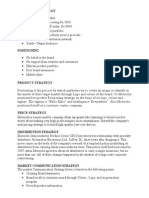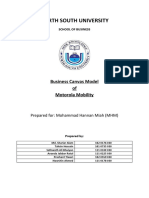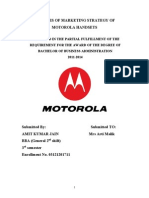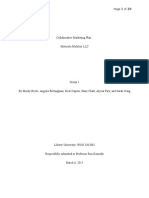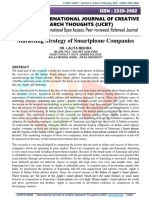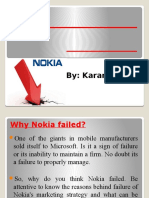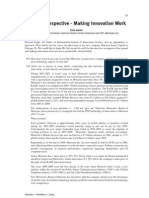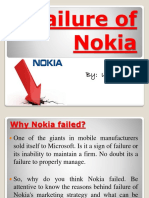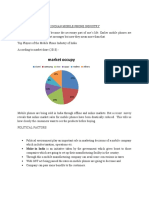0% found this document useful (0 votes)
30 views3 pagesSTM Group Assignment
The document discusses the strategic issues that led to the downfall of Motorola in the mobile phone industry. Key issues included a slow response to the smartphone boom, lack of innovation, restrictive operating system choices, a fragmented product portfolio, missed partnerships, ineffective marketing, quality control issues, management changes, challenges expanding globally, failure to anticipate consumer trends, and insufficient focus on user experience.
Uploaded by
q87319167Copyright
© © All Rights Reserved
We take content rights seriously. If you suspect this is your content, claim it here.
Available Formats
Download as DOCX, PDF, TXT or read online on Scribd
0% found this document useful (0 votes)
30 views3 pagesSTM Group Assignment
The document discusses the strategic issues that led to the downfall of Motorola in the mobile phone industry. Key issues included a slow response to the smartphone boom, lack of innovation, restrictive operating system choices, a fragmented product portfolio, missed partnerships, ineffective marketing, quality control issues, management changes, challenges expanding globally, failure to anticipate consumer trends, and insufficient focus on user experience.
Uploaded by
q87319167Copyright
© © All Rights Reserved
We take content rights seriously. If you suspect this is your content, claim it here.
Available Formats
Download as DOCX, PDF, TXT or read online on Scribd
/ 3









